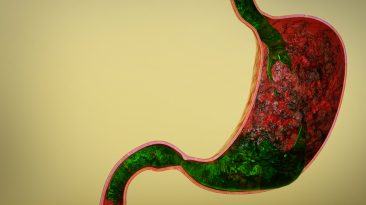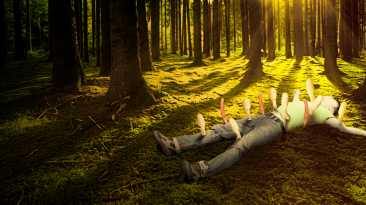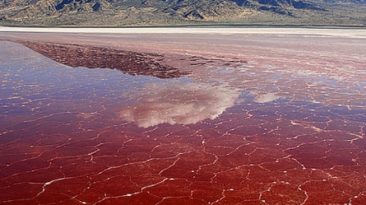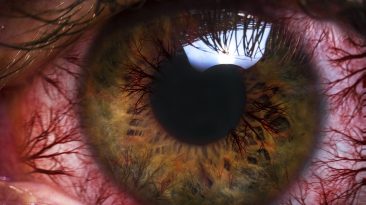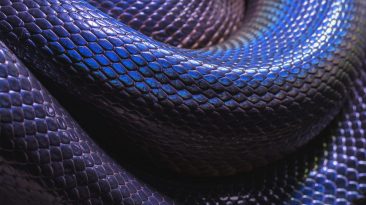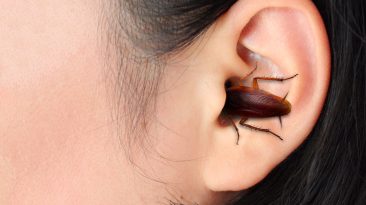Do you hate spiders? Their legs, their eyes, and oh man, their webs. Well, it turns out that they don’t like you much either. Imagine that you’ve stumbled into the belly of the beast, and now you’re trapped in the sticky, horrifying webs of a giant spider. Just how strong is this stuff? Do you have any chance of breaking free? Or are you going to become the spider‘s next meal?
It looks like you’ve gotten yourself into a sticky situation. Spiders’ webs are not something to take lightly. Especially if you’re caught in one. Each strand of spider silk is 1,000 times thinner than a strand of human hair. And each strand of silk is made up of thousands of nano-strands which are 10-20 millionths (0.004-0.008 in) of a millimeter in diameter. And they are very, very strong.
I know what you’re thinking.“1,000 times thinner than hair? Please…Well, laugh it up now because if we extrapolate this information to a human-sized spider, a big enough web could snag a jetliner. Talk about ordering delivery. Spiders use silk for making webs, protecting their offspring, as a way to escape predators, and above all, for catching and wrapping up their prey.
Orb webs consist of several different kinds of silk, and make webs that are strong and rigid. The silk is produced in different glands, and has different characteristics, depending on what the spider needs. For example, if the spider wants some building material, it will use its major ampullate gland.
For capturing food, it would use its flagelliform silk gland to build the trap. The spider then covers it with a sticky, glue-like coating. The glue is both viscous and elastic, and very, very hard for food to escape from. And I’m sorry to say that in this case, the food is you. So let’s break this down on a scale of “eww, a spider web” to “Oh no, I’m going to be spider food.
Let’s say you only got an arm stuck in a massive web. In this case, you’re very likely to escape. This is because you can just cut your arm loose. If both of your arms get stuck, we hope you’re flexible enough to use your legs to separate at least one hand from the web.
Its also worth noting that now would be a good time to lose your jacket, shoes, even your pants if they’re attached to the web. You don’t want to wait around and see what’s coming.
But what if you weren’t so lucky? What if you manage to get completely snagged, and the homeowner of this web of death is lurking nearby? Well, you’re really not going to like this next bit of advice, but you’ve gotta trust me on this. I mean, it’s not like you have many other options. You want to make a fuss, and attract the spider over to you.
Wait, don’t go! Hear me out. I know it sounds insane, but it may just save your life. If you’re wrapped up like a pig in a blanket, you’ll want to wiggle, scream, and essentially have a tantrum. Now the spider is going to notice this, as their webs are basically built with motion sensors.
Your goal would be to make yourself seem like you’re too big, or too dangerous, to be spider food. And if the spider thinks that you’re not worth the trouble, it will cut you loose. This plan is based on research showing that putting up a fuss is the only way to escape. Scientists at the University of Lahnberge say that staying active is the best way to get free from a spider’s web. This is why we see some daring escape artists in the world of insects.
Well, that’s the plan anyway. Because it may backfire. If the spider thinks you look tasty, well, it will just wrap you up even more.
This will completely restrict your movement, and well, things won’t work out for you. You’re either going to be eaten or die of dehydration, or starvation from being in the web for so long.
Thankfully, we live in a world where natural spider webs aren’t capable of catching a human being. That is, unless we artificially engineer some, or find ourselves with a sudden case of giant spiders.
Sources
- “Arachnid | Definition, Facts, & Examples“. 2020. Encyclopedia Britannica.
- “The World’s Biggest Spider Web Can Span An Entire River“. Davies, Ella. 2020.Bbc.Com.
- “Funnel-Web Spiders: Families, Bites & Other Facts“.Contributor, Jessie. 2014. Livescience.Com.
- “Black Widow Spider Web: Appearance & Characteristics“.Pests, Spiders, and Widows. 2020. Orkin.Com.
- “The Elaborate Structure Of Spider Silk“. Römer, Lin, and Thomas Scheibel. 2008.
- “Spider Silk Is Five Times Stronger Than Steel—Now, Scientists Know Why“. 2018. Science | AAAS.












